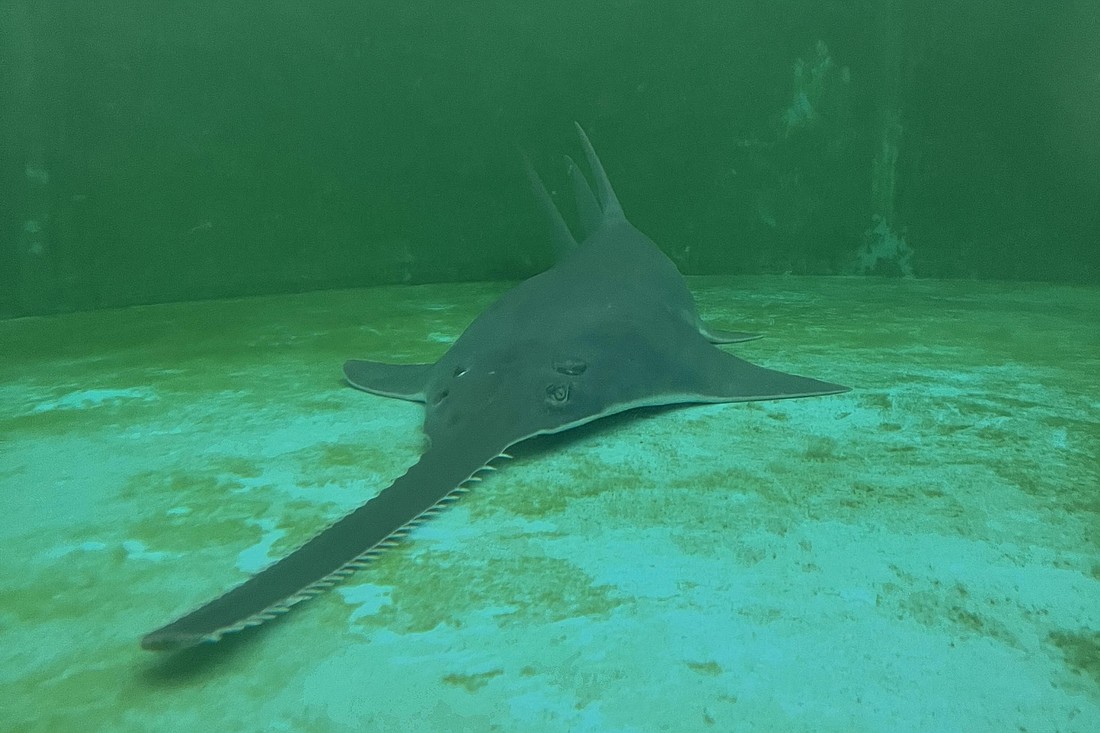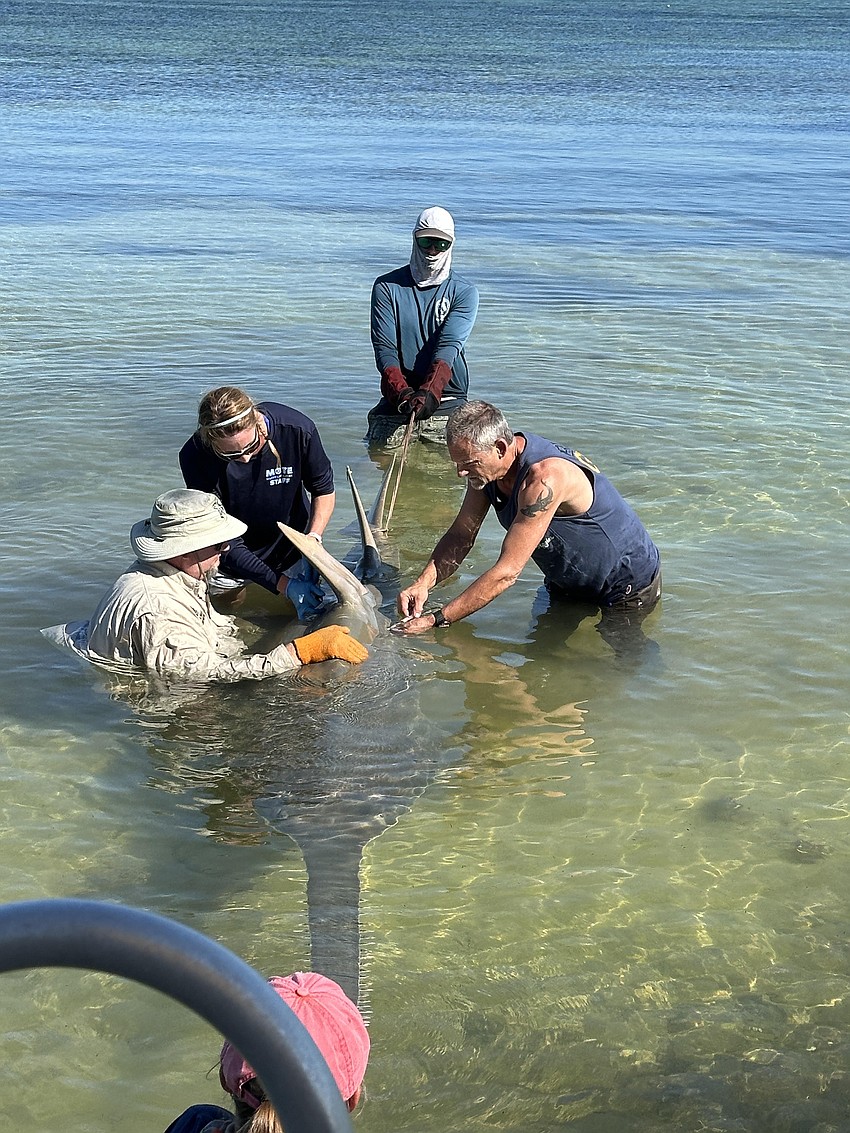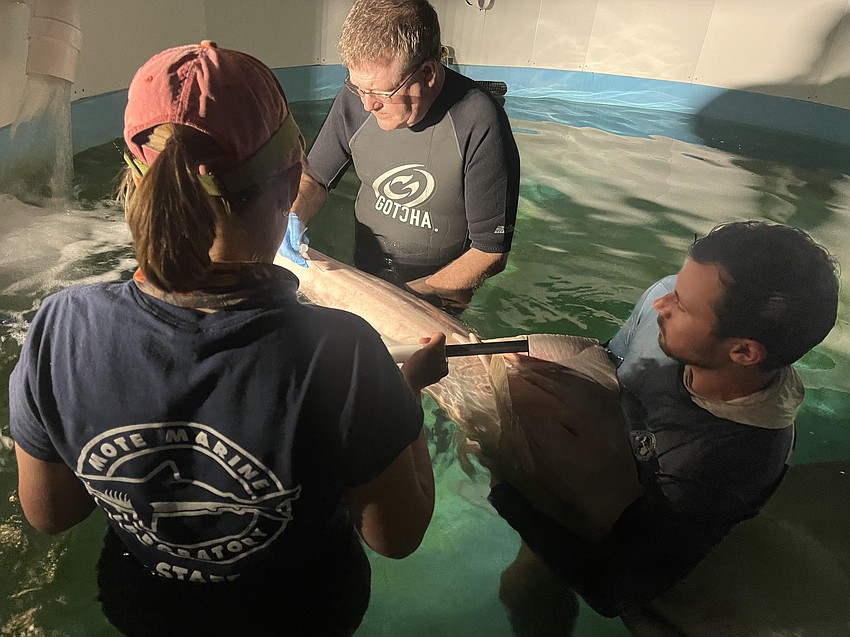- July 9, 2025
-
-
Loading

Loading

On April 11, a smalltooth sawfish arrived at Mote Marine Laboratory & Aquarium in Sarasota, making it the first of its species rescued from the Florida Keys.
“This is the first time, to the best of my knowledge, that a smalltooth sawfish has been successfully rescued and has gotten to this point,” Mote President and CEO Michael Crosby said.
Mote — along with organizations like the Florida Fish and Wildlife Conservation Commission and National Oceanic and Atmospheric Administration — have been monitoring abnormal behavior with dozens of species in the Florida Keys, according to Crosby.
“This was an alarming situation for Mote Marine Laboratory scientists as well as scientists at many different institutions and agencies,” Crosby said.
The FWC and NOAA asked Mote to come on board as a part of this partnership to look closer at the smalltooth sawfish, which is classified as a critically endangered species.
The organizations recently began rescue operations of smalltooth sawfish, when necessary, with the hope of rehabilitating and releasing the animals at some point. Mote offered the use of all its facilities across nine campuses, including a location in the Keys.
On April 5, there was a report of a smalltooth sawfish in distress in Cudjoe Key. Scientists from Mote and FWC arrived on the scene and deemed the conditions appropriate for an attempted rescue, according to Crosby’s account.
A rescue of that magnitude takes hours, Crosby said. It took about six crew members from Mote and FWC to contain the animal that’s over 10 feet long.

Its rostrum is about 3-4 feet long and is the reason for the smalltooth sawfish’s name. Each side of the rostrum has about 22-29 sharp teeth.
“That is really a potentially deadly weapon,” Crosby said. “You have to approach the animal very, very carefully.”
The rescue team needed to approach the fish from all sides and hold it steady to contain the rostrum. Mote has skilled staff, but Crosby also recognized the “incredible” FWC staff members who specialize in animals like this.
The sawfish was placed on a boat and water would continuously flow onto its gills to keep it alive until the crew reached a temporary rehabilitation center provided by Mote.
From April 5-11, the sawfish remained in the temporary rehabilitation center in the Keys until it was decided that the animal was stable enough to be transported to Sarasota. While in the Keys, scientists began taking blood and tissue samples, and began rehabilitation procedures.
On April 11, it was time to transport. The journey from Cudjoe Key is about 361 miles and could take a little over six hours.
The sawfish was loaded onto a specialized transport trailer provided by Ripley’s Aquariums Conservation Team, and scientists with Ripley’s monitored the animal’s condition throughout the drive.
Although its condition is still critical, the animal is beginning to show signs of improvement. Crosby remained cautiously optimistic.
“While the animal has basically gone from an ICU kind of status to a critical care status, it is stabilized, it is swimming in its new facility now,” Crosby said.
Current treatments for the sawfish include things like fluids, antibiotics and lipids treatments to try to draw out any possible toxins.

The cause of all this is still unknown, Crosby said, and it may be a while before any causative agent is definitively discovered. The abnormal behavior with many species in the Keys could be related to toxins, parasites or something else, but Crosby said it's important to maintain an open scientific approach during future research.
Rehabilitation of this critically endangered animal is intense.
“It’s important at least for the next several weeks that we have somebody there at all times and the appropriate staff on call at all times,” Crosby said.
That means there is a person with the sawfish 24/7 until it shows greater signs of recovery. Trained staff are there to observe the sawfish in case its conditions change, and there are other staff members on call to respond if necessary.
If the sawfish fully recovers, the release location would be up to the FWC, according to Crosby.
But for now, that timeline is up in the air.
“Our goal is to do everything we possibly can to bring this animal back to health and return it back out to its own environment,” Crosby said.